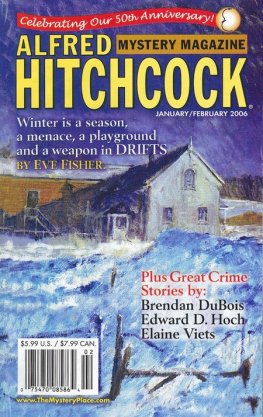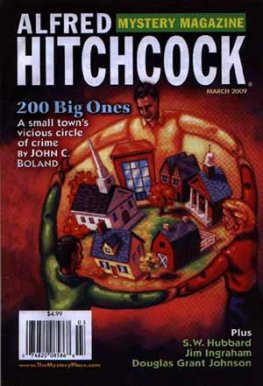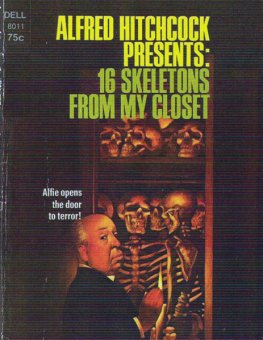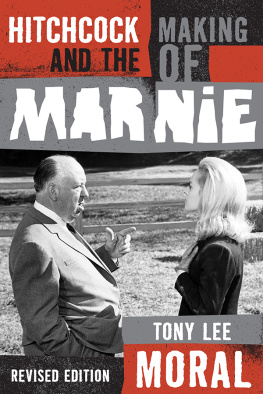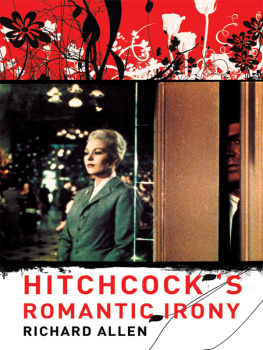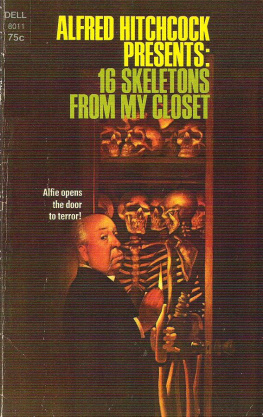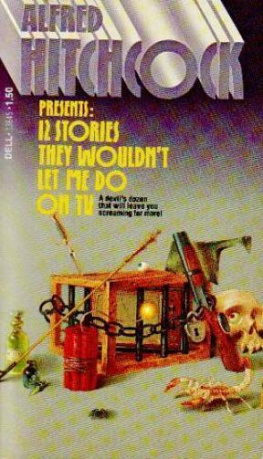When theres a prowler on the loose in your neighborhood, you might consult the local locksmith as Mrs. Grant does in The Creeper. You could sleep more easily then, that is, unless the locksmith is moonlighting as the creeper himself. Remember Lamb to the Slaughter, in which the murder weapon, a frozen leg of lamb, is fed to the detectives investigating the case? How about the one in which a ventriloquist falls in love with his dummy? These three classic tales are among the 359 episodes that formed one of televisions longest running and most popular series, Alfred Hitchcock Presents.
The show ran for ten years, from 1955 to 1965, and involved Hitchcock himself as director of many of the episodes and host and producer of all of them. The stories are remembered for their twist endings and crime does pay themes that often caused a stir among censors. Hitchcock himself frequently shocked sponsors with disparaging on-screen remarks about commercials, but he continually delighted the viewers.
Alfred Hitchcock Presents tells the complete story of the series and how it related to Hitchcocks film career. It also discusses the many great talents who contributed to the shows success at the outset of their own careersRay Bradbury and John Cheever, Robert Altman and William Friedkin, Steve McQueen and Robert Redford, to name only a few. This is an invaluable guide to the series, with a synopsis and list of cast and credits for each episode. The first and only book dedicated to Hitchcocks illustrious career on television, Alfred Hitchcock Presents is an indispensable source for any Hitchcock fan.
JOHN McCARTY is the author of Splatter Movies and three other books on film. He lives in East Greenbush, New York. BRIAN KELLEHER is a sports and entertainment writer who lives in Saratoga, New York.
St. Martins Press
175 Fifth Avenue
New York, N.Y. 10010
PRINTED IN THE U.S.A.

ALFRED HITCHCOCK PRESENTS. Copyright 1985 byJohn McCarty and Brian Kelleher. All rights reserved.Printed in the United States of America. No part ofthis book may be used or reproduced in any mannerwhatsoever without written permission except in thecase of brief quotations embodied in critical articles orreviews. For information, address St. Martins Press,175 Fifth Avenue, New York, N.Y. 10010.
Design by Kingsley Parker
Library of Congress Cataloging in Publication Data
McCarty, John, 1944
Alfred Hitchcock Presents.
1. Alfred Hitchcock Presents (Television program)
I. Kelleher, Brian. II. Title.
PN1992.77.A479M39 1985 791.4572 84-22887
ISBN 0-312-01710-3
ISBN 0-312-01711-1 (pbk.)
10 9 8 7 6 5 4 3 2
For my mother,
who still cant believe it.
JMcC
For my
family, friends, and neighbors.
BK
CONTENTS
ACKNOWLEDGMENTS
We wish to express our gratitude to the following people and organizations for their kindness and cooperation in helping us research and write this book: Dominick Abel; Val Almendarez; John Behrens at CBS; Eric Caidin; Capital Newspapers; Lisa DiMona; Elaine Fiveash; Cathy Fry; Ellie Hashian at WSBK-TV, Boston; Sheila Hess, New Hampshire Public Television; Monia Joblin and Carole Richards, USA Cable Network; Norman Lloyd; Cheryl McCarty; Bob Miller; Marcie Miller; Greg Montgomery; Greg Petersen; Betty Jane Reed and Robbins Williams at NBC; the invaluable Bob Reed; Henry Slesar; Debbi Snook; Al Tennyson; Tise Vahimagi; Tony Vanaria; Carole Wagan; WCFE-TV, Plattsburgh; and WXXI-TV, Rochester.
FOREWORD
MY HITCH WITH HITCHCOCK
What was it like to work on the Hitchcock show?
Come behind the scenes with me and Ill tell you.
I started out on the program in 1959, just about midway in its long run. Two of my published stories had been bought for the series and adapted by others before my own arrival in Hollywood late that year. Although Mr. Hitchcock was filming my novel Psycho, it wouldnt be released until the following summer, and no one seemed excited about the project. Id had no personal contact with him at all.
Then came a surprise.
Shortly after I began my own work as a novice television writer for a little-esteemed syndication series, I was summoned to Hitchcocks Shamley Production office and offered an assignment to do a script based on Frank Maces story The Cuckoo Clock.
Naturally I was impressed, but I cant say I was pleased. Scared spitless might be a more accurate description.
And with good reason. In 1934the year I turned seventeen and became a published writerId discovered Alfred Hitchcock on the screen. At that time his reputation had not reached the hinterlands, and Milwaukee residents like myself found his work almost by accident, on the bottom half of double-feature programs in the smaller movie houses. But The Thirty-Nine Steps and The Man Who Knew Too Much had an immediate impact, and in the years that followed, his reputation grew. Then his Hollywood career began, and the rest was history. Five years of his weekly television seriessuperior offerings, expertly produced and performedhad established Alfred Hitchcock Presents as one of the top shows in the country.
And here was I, with my meagre list of credits on Lockup, a low-budget syndication series, suddenly moving into the fast lane.
Apparently I managed to cope. While The Cuckoo Clock was far from state of the art, it seemed adequate enough to bring me further assignments. I began adapting my own published stories along with those of other writers, and my work was dramatized by outsiders only when working commitments on the concurrently running Thriller series or my first screenplays preempted working hours. In spite of such conflicting assignments, from the end of 1959 until the termination of the show in its revised format I was represented by sixteen offerings, eleven of which were my scripts.
The program was produced at Universal Studios, a showplace familiar to the many millions hauled around the lot on the famous Universal Tours. But those whove visited the studio in recent years would be completely lost if a time machine transported them back through the gates of 1959.
There were no tours then, and no traffic problems. After proper identification one simply drove in and found a convenient parking place.
Just left of the studio entrance was the rambling old commissary wherein defiance of natural lawthe stars came out at noon. The ominous black tower didnt exist, nor the multilevel monstrosity that now stands opposite it.
That area was occupied by an ancient frame schoolhouse where generations of now-forgotten child performers, from Baby Peggy Montgomery to Butch and Buddy, once attended classes. Presently it served as the office of the Thriller series. Beyond it was a charming vista of grassy lawn, its trees and shrubbery crisscrossed by paths leading to the little stucco bungalows occupied by stars, directors, and production companies. Wandering along those pathways one frequently encountered twittering songbirds and scampering squirrels, to say nothing of Rock Hudson, Lana Turner, or Cary Grant.
One of those bungalows housed the creative team of the Hitchcock showproducers Joan Harrison and Norman Lloyd, and story editor Gordon Hessler.
Joan Harrison wasand isa remarkable lady. During her long association with Hitchcock she progressed from secretary to screenwriter to independent producer, then returned to the fold, where her rare combination of talent and expertise found full expression on the television series.
Norman Lloyd, whose speech and manner stamped him as typically British, was actually born in a somewhat distant suburb of England called Jersey City, New Jersey. He started his theatrical career as an outstanding actor and his later Hollywood appearances included roles in several Hitchcock films. This, together with directorial and producing experience, uniquely qualified him for his position with the show.
Next page

